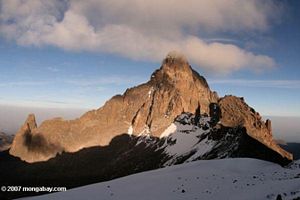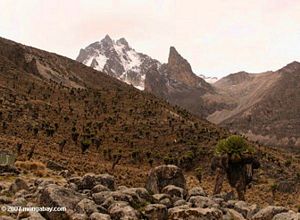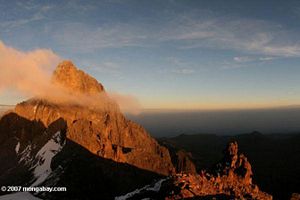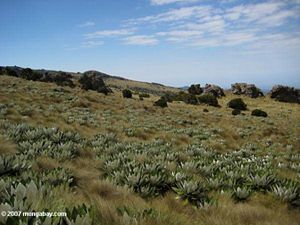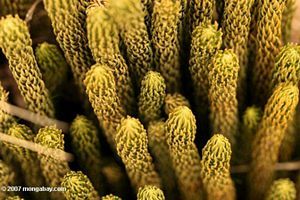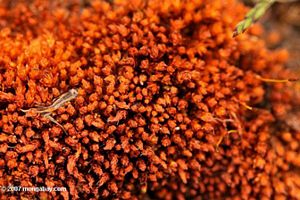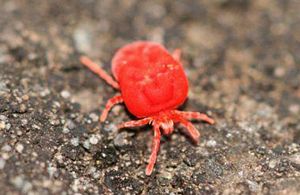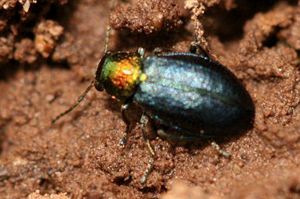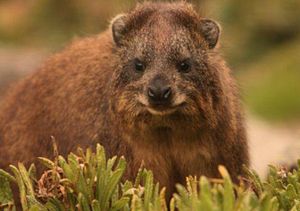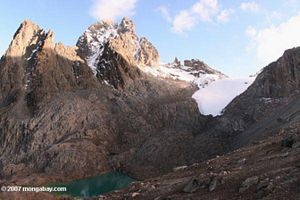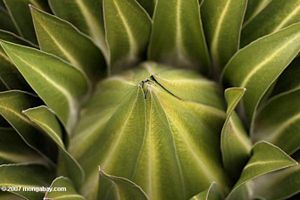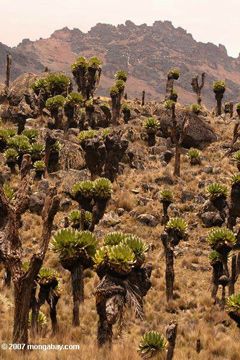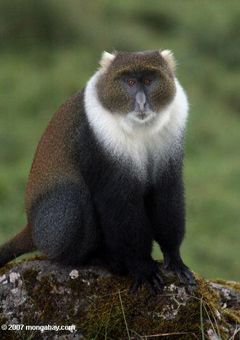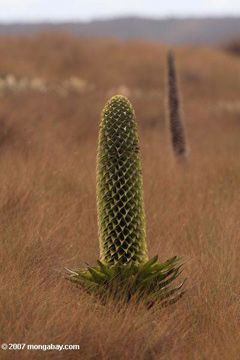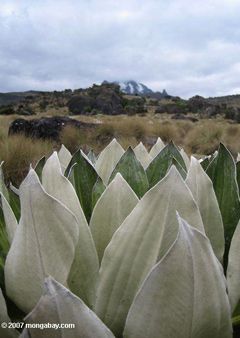Climbing Africa’s second highest mountain
Climbing Africa’s second highest mountain
Rhett A. Butler, mongabay.com
November 5, 2007
Mount Kenya, Africa’s second highest mountain, is said to be one of the continent’s most beautiful hikes. Located less than three hours’ drive from Nairobi, Mount Kenya is accessible and makes for a great add-on for fit travelers looking to do more than the standard safari in Kenya.
There are several routes for climbing Mount Kenya, three of which are well marked and frequently used: Chogoria, Naro Moru and Sirimon. The shortest of these is Naro Moru, which can be done in less than three days round-trip and has bunkhouses at each camp so hikers need not carry tents. The Chongoria and Sirimon Routes (5 days/4 nights) are longer but better for wildlife and less traveled. Many hikers go up one route and down another. There are also hikes that can be done on the mountain itself.
MY TRIP
Due to time constraints, I opted for the Naro Moru route. Setting off with my local guide on the afternoon of day one, we camped at the bunkhouses at the Met Station (elevation: 10,000 feet or 3,048 meters). Day two took us through a range of contrasting vegetative zones, from the foggy montane forest to boggy health lands to the stark alpine zone. We reached MacKinder’s Camp (elevation: 13,778 feet or 4,200 meters) in the early afternoon and stayed in a hut with a spectacular view of Mount Kenya’s Nelion peak. Rising at 2 a.m. on day three, we trudged up the steep, rocky path to reach Point Lenana (elevation: 16,355 feet or 4,985 meters) before daybreak. While unexpectedly frigid, the vista from the summit was clear and beautiful. The descent–which featured several hours of snowfall–was quick. Stopping for lunch at MacKinder’s Camp, we were back at the Met Station by the early afternoon. The following day we walked down to the park entrance where we were met by our transfer mid-morning.
GUIDES AND COSTS
Climbing Mount Kenya is not an inexpensive endeavor — park fees alone run around $25 a night. Most hikers travel with a guide and porters, adding to the cost of the trip but — importantly — helping support the local community. A good guide can provide valuable advice on how to avoid run-ins with buffalo (buffalo kill more people than any other mammal in Africa) and the best way to navigate tricky bog areas and slippery ice, as well as recognize signs of altitude sickness (Point Lenana, the peak most hikers ascend if they reach the “top” of Mount Kenya, is 4985 meters high).
The cost of a trip depends on the route, accommodations, group size and gear rental. For the Naro Moru route prices start around $300 per person for a 3-day group trip, while solo travelers can expect to pay upwards of $500 for a 3-day trip. Chongoria and Sirimon Routes are more expensive.
GEAR AND PREPARATIONS
Mount Kenya’s weather is notoriously unpredictable so it is very important to bring warm, waterproof gear. Temperatures can dip to near-zero while snow is not uncommon. In fact, after altitude and dehydration, hypothermia is probably the biggest concern for Mount Kenya hikers. Be sure to carry rain gear and bring plastic bags to protect packed clothes and cameras. Warm gloves and waterproof shoes are highly recommended. Climbing gear — other than an ice ax usually carried by guides — is not needed. Special arrangements need to be made in order to climb Mount Kenya’s two peaks — Batian (5199 m) and Nelion (5189 m). These points are only accessible to experienced, fully equipped mountaineers.
The peaks aside, climbing Mount Kenya via one of the conventional routes is not technical. For the most part, reaching Point Lenana is just a matter of walking uphill on a well-marked, but at times muddy and rough, trail. The trickiest parts of the hike, beyond the altitude, are the boggy sections of the Sirimon and Naro Moru Routes, and the steep bit before reaching Point Lenana. Here one needs to navigate icy and rocky terrain. Bear in mind that weather conditions — which can include howling winds, near zero visibility fog, freezing rain, and snow — can more the effort considerably more challenging. Most hikers attempt an ascent very early in the morning which conditions are likely to be calmer. Further the sunrise from the peak can be breath-taking.
FLORA AND FAUNA
Beyond reaching the summit, a highlight for many travelers are the bizarre plant communities of Mount Kenya. Many of the plants on the mountain are found nowhere else and look like something out of a science fiction movie. Giant groundsel (Senecio keniodendron), Lobelia keniensis, and Lobelia telekii are some of the more conspicuous species in the grassy Afro-alpine zone above 3,800 m (12,500 ft), though more than 100 species of wildflowers can also be found in the ecosystem.
Above the tree-line there are few animals beyond the ubiquitous rock hyrax and various birds. A bit lower, in the montane forest, buffalo, elephant zebra, Sykes monkey, and various antelope are not uncommon. Mosquitos are not found on Mount Kenya so there is no risk of malaria.
Overall, the combination of scenery, unusual plant life, and bragging rights of climbing Africa’s second highest mountain make Mount Kenya a must-do for able-bodied travelers. It is an unforgettable experience that goes well beyond the typical East African safari.
RESOURCES
BOOKS
